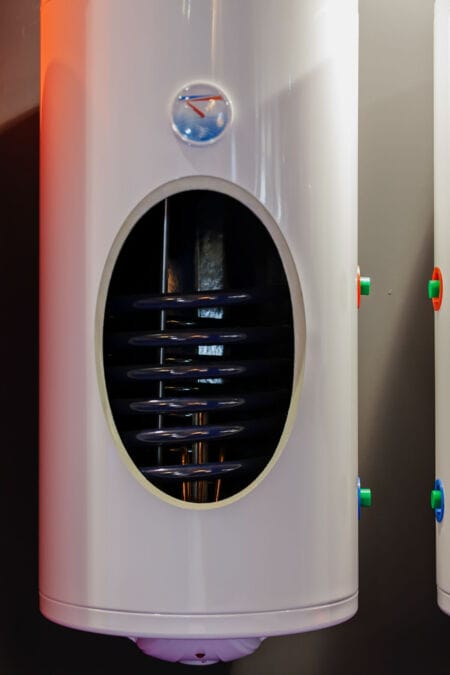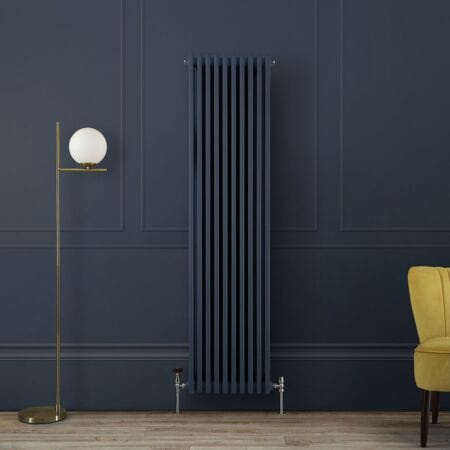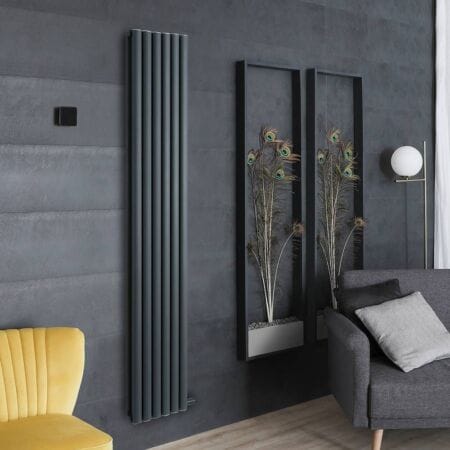Contents
ToggleWhat we'll cover...
A comparison between smart TRVs and manual TRVs, explaining the merits of both designs and advice on which type to invest in.
Choosing the right valves for your smart heating system
Gone are the days when your only heating control option was to spin a mysterious numbered dial and hope for the best. These days, thermostatic radiator valves (TRVs) have levelled up – some can now be described as smart TRVs, others stayed classic, and now they’re going head to head like a home heating version of FIFA vs. PES back in the early 2000s.
So, should you keep it simple with a manual valve setup, or go all in with a smart version that basically lets your radiator talk to your phone (and maybe judge your room temp choices)? In this ultimate guide, we’ll break down the pros, cons, and quirks of both, and help you work out which one deserves a place on your radiator roster.
What is a TRV and why should you care?
Let’s start with the basics. A TRV (short for thermostatic radiator valve, but no one has time for that mouthful) is a nifty little device that controls the temperature of your radiator. It sits on the side like a mini heating bouncer, deciding how much hot water gets in and when.
Why’s it important? Because not every room needs to feel like a tropical rainforest all year round. TRVs let you set different temperatures for different rooms, which is great for energy efficiency and for domestic harmony – especially if your household includes one person who’s always cold and another who opens windows in January “for fresh air”.
Manual TRVs: Simple, solid and slightly stubborn
Told you they were like mini bouncers. Manual TRVs are the OGs. You twist the dial, set it to a number (usually 1 to 5), and your radiator will heat the room to an approximate temperature. There’s no Wi-Fi, no apps, and definitely no talking back as you might find if syncing smart heating with Google or Alexa with smart TRVs.
Pros:
- No nonsense – Twist and go. No app crashes, no software updates, no mysterious login requests.
- Cheap as chips – Manual TRVs are the budget-friendly option. Great if you’re upgrading on a shoestring.
- Low maintenance – Nothing to connect or program. Just set it and forget it (until summer, when you wonder why the lounge feels like a sauna).
Cons:
- About as smart as a toaster – No scheduling, no remote control, and definitely no adapting to your lifestyle.
- Not the most accurate – You’re essentially guessing the room temperature. Number 3 might mean “pleasantly warm” in one room and “sweaty regret” in another.
- Manual means manual – You have to manually and physically change settings every time the weather shifts or your routine changes. Thatcher’s Britain.
Smart TRVs: Your radiator's brainy best mate
Smart TRVs take everything a manual TRV can do – and crank it up to 11. These gadgets connect to your Wi-Fi and let you control individual radiators from your phone or smart home system. Want to heat the bathroom before you wake up? Done. Want to turn off the spare room heating while you’re on holiday? Easy.
They’re part of a wider smart heating movement that includes voice control, AI learning and heating integration, and more data than a Spotify Wrapped.
Pros:
- Zonal control perfection – Heat each room differently, based on usage and time of day. It’s like turning your home into a custom-heated palace (minus the royal energy bill).
- App control – Forgot to turn the heating off before heading out? Do it on the go. Or from the sofa. Or from the pub.
- Energy efficiency – Only heat what you need, when you need it. Your wallet and the planet will both thank you.
- Learns your habits – Some models adapt over time. Creepy? Maybe a little bit. Useful? Definitely.
Cons:
- More expensive upfront – They’re not cheap, especially if you’re installing several. But over time, they can save you serious cash.
- Tech setup required – You’ll need a compatible hub or smart thermostat, plus a smidge of patience to get it all connected.
- Wi-Fi dependent – No internet = no control. Cue mild panic when your signal drops mid-heatwave (or cold snap).
One of the biggest wins with smart TRVs is their ability to support zoned heating. Instead of blasting the whole house every time someone feels a bit chilly, you can warm the living room for movie night, the kitchen for cooking, and leave the unused guest bedroom out of the equation entirely. One of the best smart features for cutting heating costs.
Zonal heating also means fewer thermostat arguments. Want your home office at 21°C while the bedroom stays cool for a better night’s sleep? Sorted.
Cost vs convenience: Are smart TRVs worth the upgrade?
Ah yes, the crux of the debate: save money now with manual TRVs or spend more upfront for long-term comfort and efficiency?
Here’s the breakdown:
Feature | Manual TRVs | Smart TRVs |
Price | Budget-friendly | Higher initial cost |
Control | Basic & manual | App, voice, and remote control |
Scheduling | Nope | Fully programmable |
Energy Efficiency | Depends on user discipline | Automated, learns habits |
Zonal Heating | Limited | Full customisation |
Compatibility | Works with most systems | Needs smart hub or thermostat |
In short: manual TRVs are great if you just want simple, affordable control. Smart TRVs are ideal if you’re building a smart home heating setup, care about long-term savings, or just want to control your heating without ever getting off the sofa.
Manual or smart? Which TRV wins?
In summary:
- Stick with manual TRVs if you want something simple, cheap, and dependable.
- Go for smart TRVs if you want ultimate control, energy savings, and a modern, app-controlled lifestyle that even your designer radiators can be a part of.
Whichever you choose, you’ll be better off than relying on a central thermostat to do all the heavy lifting. And hey, your toes will thank you either way.
Learn about all the key components of a smart heating setup, as well as the top smart heating trends for 2025, and let us know, do you have a favourite TRV arrangement? Let us know in the comments or show off your inspirational radiator and valve designs on Instagram, Facebook or X.
John is a Research Specialist for the Best Heating Advice Centre, where for over nine years he has dedicated himself to demystifying home heating for our customers. He specialises in creating clear, data-driven guides and how-to articles by collaborating directly with our team of certified heating experts and product engineers.
His work, built on a foundation of journalistic research, has helped millions of readers make confident and informed decisions about their home heating. When he’s not breaking down the heat output differentials from radiators to heated towel rails, John fancies himself as a fine football and music connoisseur.






